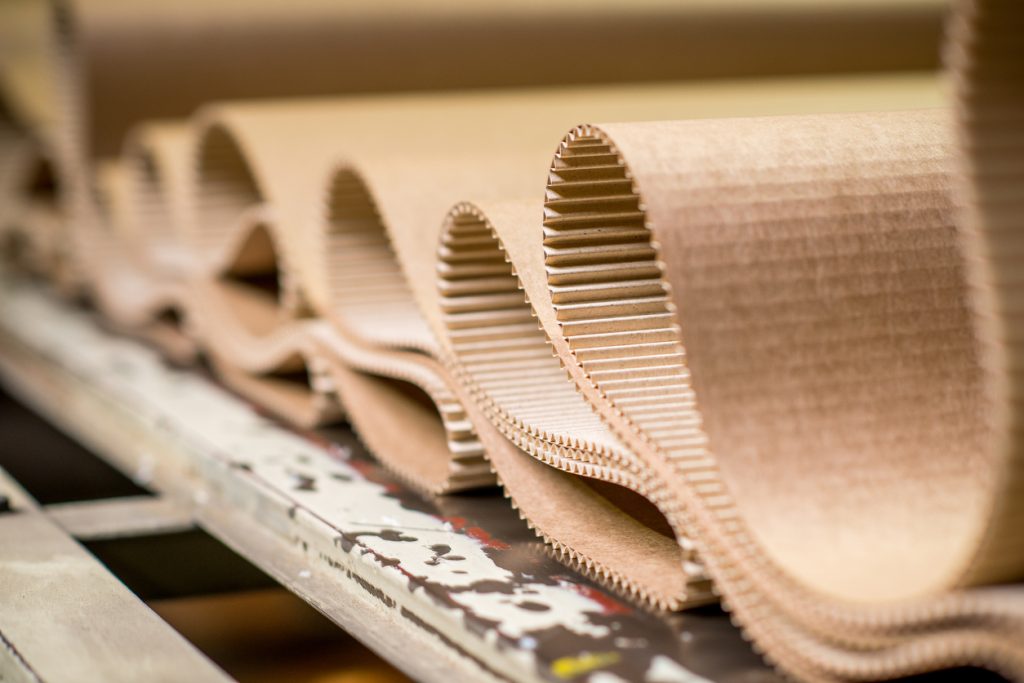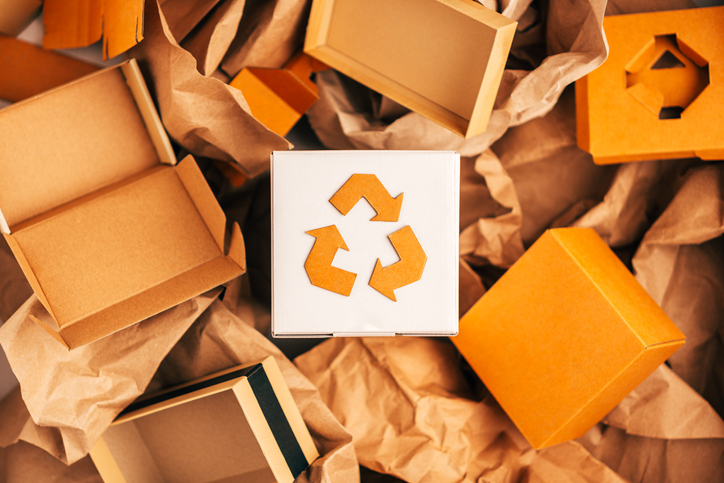The Fibre Packaging Europe campaign advocates for:
An EU-wide 90% collection target.
Fibre packaging designers, manufacturers, suppliers and recyclers are constantly innovating to boost recycling rates beyond the sector-leading 83,2% rate. But if used packaging does not make it to the right place, it can not be recycled at all. It is time for EU countries to take a stronger role in this circular ecosystem by agreeing to a more ambitious rate of used packaging collection and sorting.
- Efficient recycling will be possible only with an efficient collection system.
- Mandatory collection targets are crucial to ensure that fibre-based packaging is recycled at scale by 2035.
- Separate collection of paper will enhance the quality of fibres, ensure that they are kept in the loop and that materials end up in the appropriate recycling stream.
- Predictable packaging waste flows will incentivise investments in recycling infrastructure and technologies.
Recycling and reuse are complementary: Don’t drop recycling unless it makes environmental sense
EU policies must be informed by the best available evidence. The Commission’s pioneering environmental footprint approach should be used in setting all targets based on reliable, verifiable and comparable information of the whole life-cycle of a packaging product.
- There is no one-size-fits-all solution for circular packaging. Each has to be considered on its own merits with the best available evidence.
- The Commission’s pioneering ‘environmental footprint’ approach is the best way of achieving this. It means assessing the full life cycle of a product to deliver the best overall environmental outcome.
- In many cases, the science tells us that single-use fibre-based packaging has a better environmental performance than re-use.
Make use of industry expertise for the most sustainable outcomes
It is important to set the right guidelines for industry to follow. Leaving out the industry’s own expertise in that process risks giving policymakers an incomplete picture of how best to reach the EU’s sustainability goals.
- Design for Recycling Guidelines are technical documents that need to be evidence-based, robust and reflect state of the art.
- The value chain is already taking action and developing expert-led solutions.
- Input from the relevant industry stakeholders will be crucial in ensuring that criteria support rather than hinder the industry and its competitiveness.
- CEN is best placed to develop the Design for Recycling criteria as it provides a technical and transparent process.
Our positions on key European sustainability policies – from packaging and packaging waste to sustainable products and green claims:
FPE Manifesto: Towards a sustainable and competitive European fibre-based packaging value chain

Environmental Policy Omnibus
Environmental Policy Omnibus – call for evidence.

Circular Economy Act
Circular Economy Act – our policy recommendations.

FPE Manifesto
Fibre Packaging Europe uploaded a video related to its new manifesto.

FPE Manifesto
Fibre Packaging Europe published its manifesto containing policy recommendations.

Packaging and Packaging Waste Regulation
Fibre Packaging Europe’s positions on Article 22, Annex V 5b: bans for “unneeded layers of cardboard boxes packaging” with healthcare and cosmetics packaging.

Packaging and Packaging Waste Regulation
Fibre Packaging Europe’s position on the Commission proposal

Packaging and Packaging Waste Regulation
The right way to packaging reuse and waste prevention targets

Packaging and Packaging Waste Regulation
Sustainable packaging solutions: fit for purpose

Single use and reuse
Recyclable single-use paper and board packaging as a leading circular and
sustainable solution in a climate-neutral economy

Sustainable Products Initiative
Fibre-based packaging: a frontrunner among sustainable products

Substantiating green claims
Streamline green claims, but allow for customised solutions
Want to find out more?

We are delighted to share our views at events and meetings.
Contact us for more information:
info-fpe@logos-pa.com